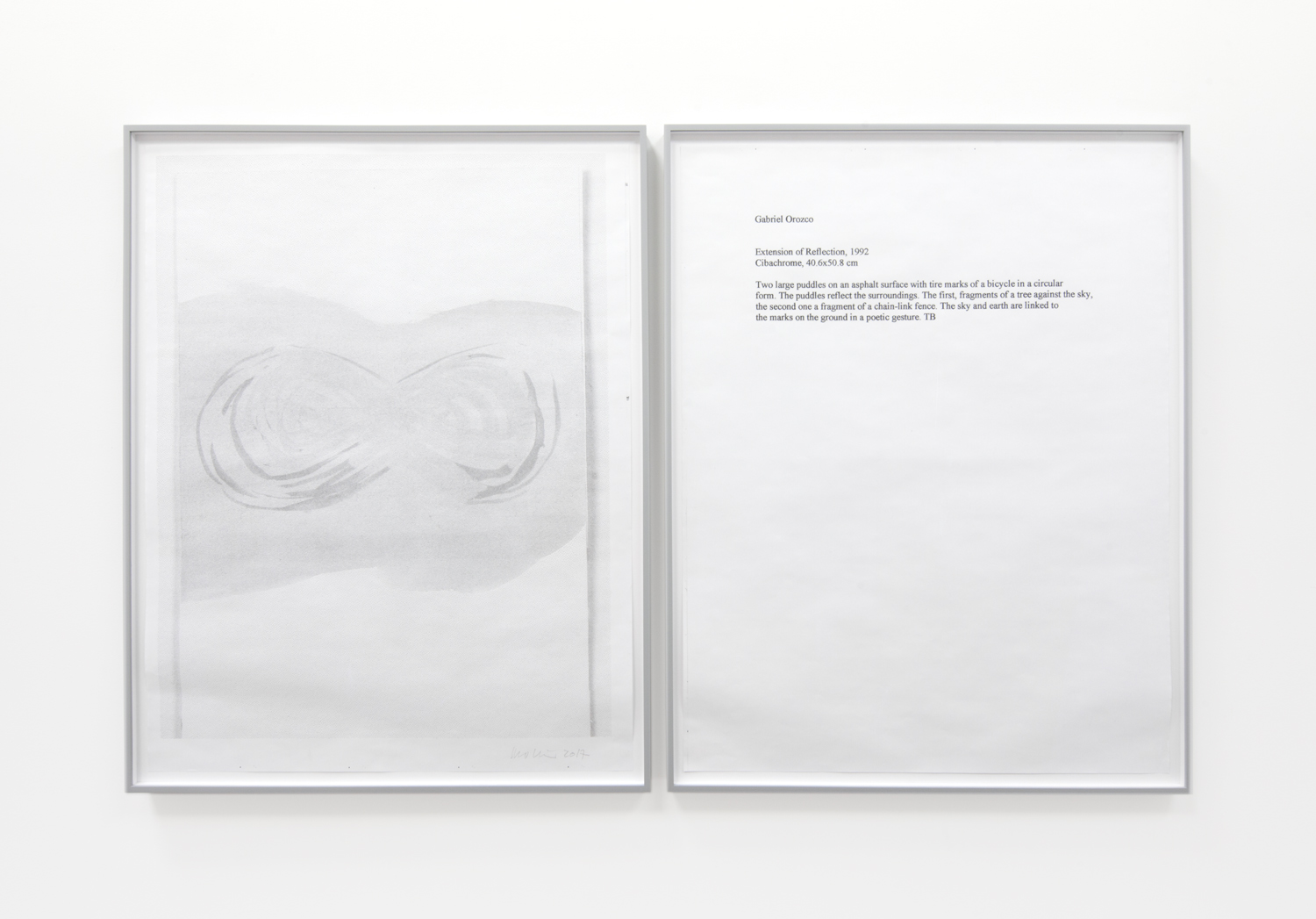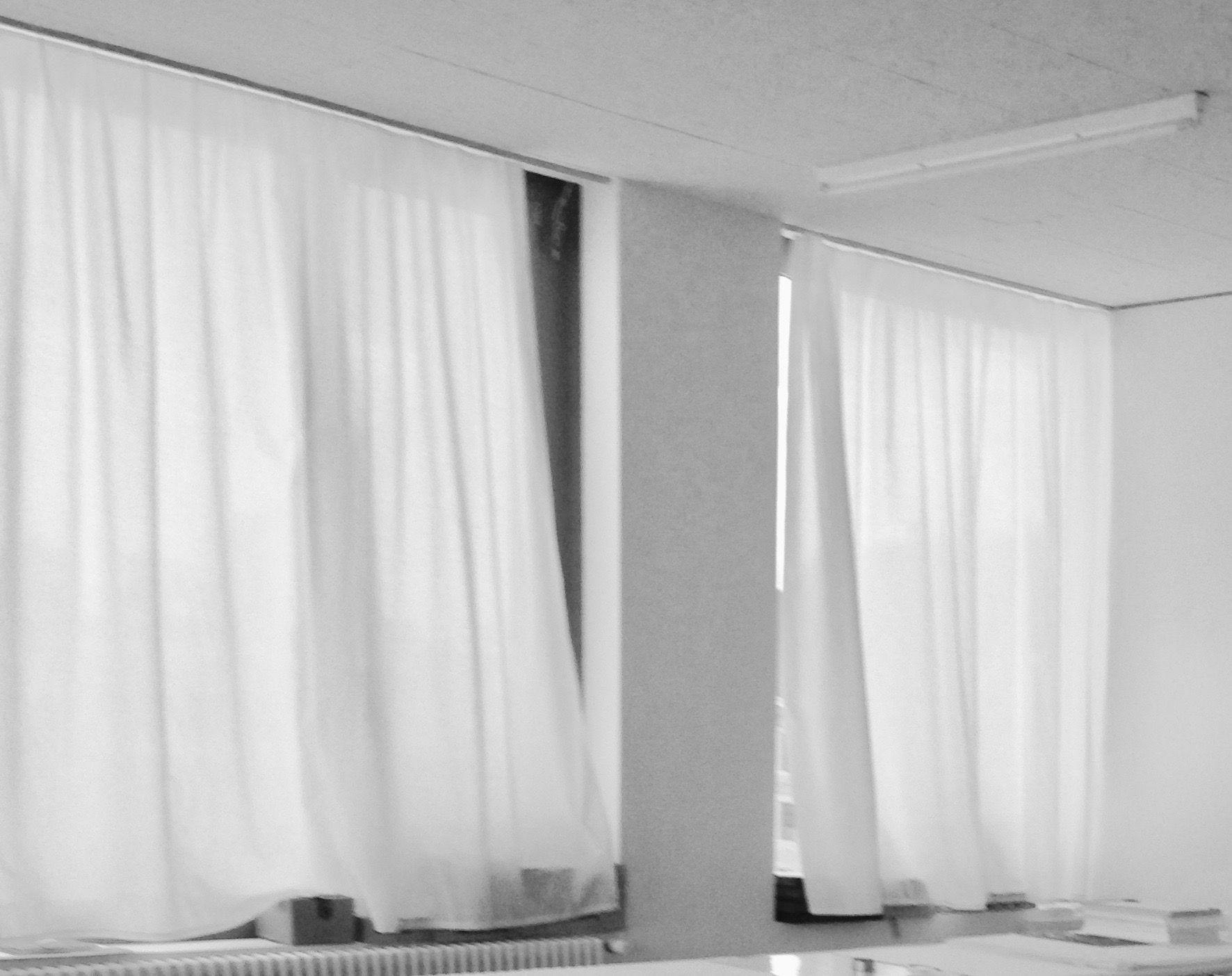Hybrids: One Work with Footnote, 2017; Christie Contemporary, Toronto,,











Christie Contemporary, Toronto, April 28 - June 3, 2017
Hybrids: One Work with Footnote, 2017; ink on paper, hybrid digital processes, 30” x 40” each





Intimations, 2009; ink on paper, 24cm x 35cm x 2 cm
Christie Contemporary, Toronto, 28 April - 3 June 2017

Hybrids: One Work with Footnote, 28 April to 3 June 2017, Christie Contemporary, Toronto
Throughout the body of work entitled Hybrids: One Work with Footnote (2015–2017) an image and a text are paired like a series of pages in a book. These pairings emphasize the connections to reading an artwork and the process by which it may be deciphered. Umberto Eco differentiated between “decoding” and “aberrant decoding,” an interpretation of a work that is different from what was intended. The notion of a footnote is key in that it points to something tangential but significant in its differentiation between it and the main text. Footnotes may introduce a speculative element or an element of doubt that necessitates its separation from the main body of the text. It is this quality of uncertainty in terms of establishing credibility for an argument that brings an additional layer of meaning to potential interpretations.
Hybrids: One Work with Footnote, a series of works that each reference one specific work by an artist may be a close reflection of an original piece or may remain only partially recognizable through association. Individual works by Gego, Bethan Huws, Gabriel Orozco, Luc Tuymans and Joyce Wieland are identified. Bolliger refers to this process as generating “a construct of approximation.” Whether partially remembered or deliberately tending toward a narrower interpretation, each artwork is the visual result of what lies between the artwork and the memory of it. Barthes’ concept of the punctum comes to mind, each image an attempt at manifesting that key, but elusive point of connection. Hybrids: One Work with Footnote involves considerations of Reception Theory, the complex nature of the interpretive space between author, artwork and reader.
Engaging in a discussion about an artist’s oeuvre involves providing a broader context of art historical, theoretical, philosophical, literary and cultural interpretation. The act of highlighting important practices by specific artists imparts the notion of influence as a sustained discourse an artist has with the artworks of others.
— Shannon Anderson
Hybrids: One Work with Footnote, a series of works that each reference one specific work by an artist may be a close reflection of an original piece or may remain only partially recognizable through association. Individual works by Gego, Bethan Huws, Gabriel Orozco, Luc Tuymans and Joyce Wieland are identified. Bolliger refers to this process as generating “a construct of approximation.” Whether partially remembered or deliberately tending toward a narrower interpretation, each artwork is the visual result of what lies between the artwork and the memory of it. Barthes’ concept of the punctum comes to mind, each image an attempt at manifesting that key, but elusive point of connection. Hybrids: One Work with Footnote involves considerations of Reception Theory, the complex nature of the interpretive space between author, artwork and reader.
Engaging in a discussion about an artist’s oeuvre involves providing a broader context of art historical, theoretical, philosophical, literary and cultural interpretation. The act of highlighting important practices by specific artists imparts the notion of influence as a sustained discourse an artist has with the artworks of others.
— Shannon Anderson